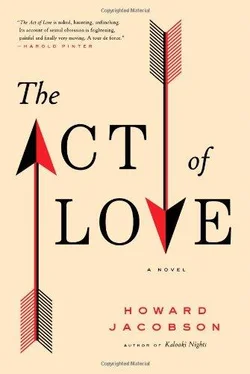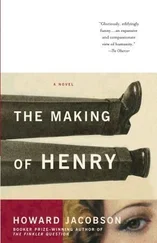Someone who would bring the both of us to our knees.
Enter, courtesy of that pimp Fortune, Marius.
Is it any wonder I made a grab for him? A vaguely troubling presence when I’d had no need for him, a distant figure agitating me at the margins of my masculinity, here suddenly he was, deranged and dangerous, an abstemious immoralist, a sadist at his wits’ end, and on my doorstep. Just the man to save my marriage.
PART THREE. MARIUS AND MARISA
‘Love her, love her, love her! If she favours you, love her. If she wounds you, love her. If she tears your heart to pieces. . love her, love her, love her!’
Charles Dickens, Great Expectations
OF THE SOCIETY BEAUTIES WHOSE PORTRAITS HANG IN THE WALLACE Collection, the most palpitatingly lovely is Margaret, Countess of Blessington, painted by Sir Thomas Lawrence. She is positioned prominently, as she deserves to be, in a brothel-red damask and velvet chamber, to your right as you enter the gallery. I was introduced to her initially by my father who, whatever else there was to say against him, believed his son should have an art education, the more particularly as there was such a capital collection around the corner from where we lived. The old reachout-and-grab principle.
His was, it’s true, a fairly peremptory idea of what constituted aesthetic discourse — ‘Now that,’ he told me, pausing in front of Lady Blessington, ‘is what you call a bosom’ — but some fathers don’t even get that far with their sons’ education.
Lady Blessington was on Marisa’s mind in the period following her eyeballing Marius in the cheese shop because, in her capacity as a volunteer guide and occasional lecturer, she had agreed to give a short talk about the portrait; and Lady Blessington was on my mind because, in my capacity as procurer for my wife, I thought Marius would get something out of hearing Marisa delivering it.
It wasn’t to be a major PowerPoint presentation in one of the gallery’s grand lecture theatres, just a gentle disquisition in front of the painting itself. Part of a series entitled Meet the Ladies of the Collection which the gallery was running. Ladies of the collection as in the aristocratic subjectsof the portraits — Madame de Pompadour, Madame du Barry, Lady Hamilton, etc. — but also, by implication, allowing that women are not called ladies any more, as in Marisa and her fellow female volunteers. That was what the flyer advertising the series of talks showed: the six women lecturers standing in front of the six painted ladies — someone at the gallery, I fancied, hoping for a television series.
It wasn’t one of Marisa’s favourite portraits, perhaps because the Countess of Blessington wasn’t one of her favourite subjects. Marisa, remember, was not a cleavage kind of person, whereas the countess was famous throughout Europe for the deep voluptuousness of hers. Nonetheless, she admired Thomas Lawrence’s execution well enough.
I, on the other hand, though not a cleavage kind of person either, won’t hear a word against the lady. That she makes the most of her famously esteemed chest (Lamb and Hazlitt, as well as my father, were among its admirers) in a gown which uplifts and accentuates it, and by adopting a pose in which she would appear to be showing how little it is subject to gravity — as though in her all flesh becomes as air — I’d see no reason to deride her even if she hadn’t been a woman of unpromising origins who had to make the most of what Nature had bestowed on her. As the ugly duckling of a none-too-particular Irish landowning family she was married off at an indecently early age to a drunken army officer who beat and imprisoned her. After three months of hellish marriage she contrived to run away. I don’t hold with beating women, but I see this experience as important to the history of the woman she became: childless, prolific in her literary invention (no good writer was ever not beaten or otherwise maltreated first), and somewhat cold, not to say authoritative in her amours.
She was still not twenty when another officer took her, as they say, under his protection, transporting her from Tipperary to Hampshire, where she read long, studied hard, and we must suppose fulfilled, in private and in public, every expectation of a mistress since she soon became the object of a further transaction, passing from the captain’s hands to those of Lord Mountjoy, later the Earl of Blessington, for thesum — more than princely by the measure of 1815 or thereabouts — of £10,000.
One has, as I recall saying to Marisa in the course of an argument about Lady Blessington, to be grown up about all this. We wouldn’t barter a woman today, but we did once. Myself, I have this to say: if a lady with so much to recommend her, consented to be treated like an object that could be bought and sold, it must be fair to surmise that she had her eye on many of the attendant benefits, to wit the adoration of an influential man, as much jewellery as she could wear, a title she could call her own, entry into educated society, the opportunity to be listened to and read, and the freedom ultimately to enter the sexual commodities market herself, this time as a buyer not a seller.
However you view the compromises into which she was forced, Margaret, Countess of Blessington, having been several times a mistress, became at last what can only be called a master. Confident in her powers, she took up with a dandified French count some thirteen years her junior, and this in full public glare and while still married to the Earl of Blessington who, by all accounts, didn’t seem to mind. To me it is obvious that the earl, a man renowned for his munificence, did not only ‘not mind’ but was active in his encouragement of the count. He loved his wife, therefore it stood to reason that he must love her no less when other men loved her, too, and she loved them in return. No doubt he was present when the countess put the little Frenchman over her knee and did to him what had too many times been done to her.
‘You wish!’ Marisa said.
In fact I didn’t wish. Whatever worked for the Earl of Blessington would never have worked for me. It didn’t excite me to think of Marisa touching fingers in the ballroom with a perfumed dandy. I’d already seen her touching fingers with a perfumed dandy over lunch and I was still alive to tell the tale. Nothing less than the devil taking her would do me now.
Read her as you will, the ‘most gorgeous Lady Blessington’, armed with husband and effeminised lover, continued to entrance the world of literature and fashion. ‘She looked superb,’ the painter Benjamin Robert Haydon wrote of her in 1835 when, by the standards of the day, she was to be accounted middle-aged. ‘Her beautiful complexion engoldened by the luxurious light of an amorous sleepy lamp, her whole air melting, voluptuous, intellectual and overwhelming.’
To my mind, it is hard to conceive a more complete compliment being paid to a woman of any age, let alone one of forty-five, or, if you measure as Marius measured, rapidly approaching four o’clock, her day not yet spent, the wheels of her evening beginning to turn. She died of a heart attack in her fifty-ninth year, an age Marius found impossible to contemplate in the woman he had once loved to distraction. The count, however, was inconsolable. So not all young or younger men recoil from a wrinkle as though it is the plague.
Whatever our disagreements about Lady Blessington, I had no doubt Marisa would speak wonderfully about the portrait, both as it brought alive an extraordinary woman and as it related to other society paintings in the collection. I’d already heard her, for example, on the Henry Bone enamel miniature of Lady Hamilton as a bacchante on the opposite wall. The enamel had been done from an original — which it would have been a kindness to leave alone, Marisa said — by Vigée-Lebrun. So what is it you don’t like about it again, I’d ask her, for the pure pleasure of hearing her say, ‘Well, she ’s plump, soft, hairy and stupid, for starters. And as for that gauze nightgown, which leaves as little of her podgy flesh to the imagination as Lord Nelson presumably would have desired, I can’t imagine where she found it given that Ann Summers hadn’t yet opened up a shop in 1803.’
Читать дальше












